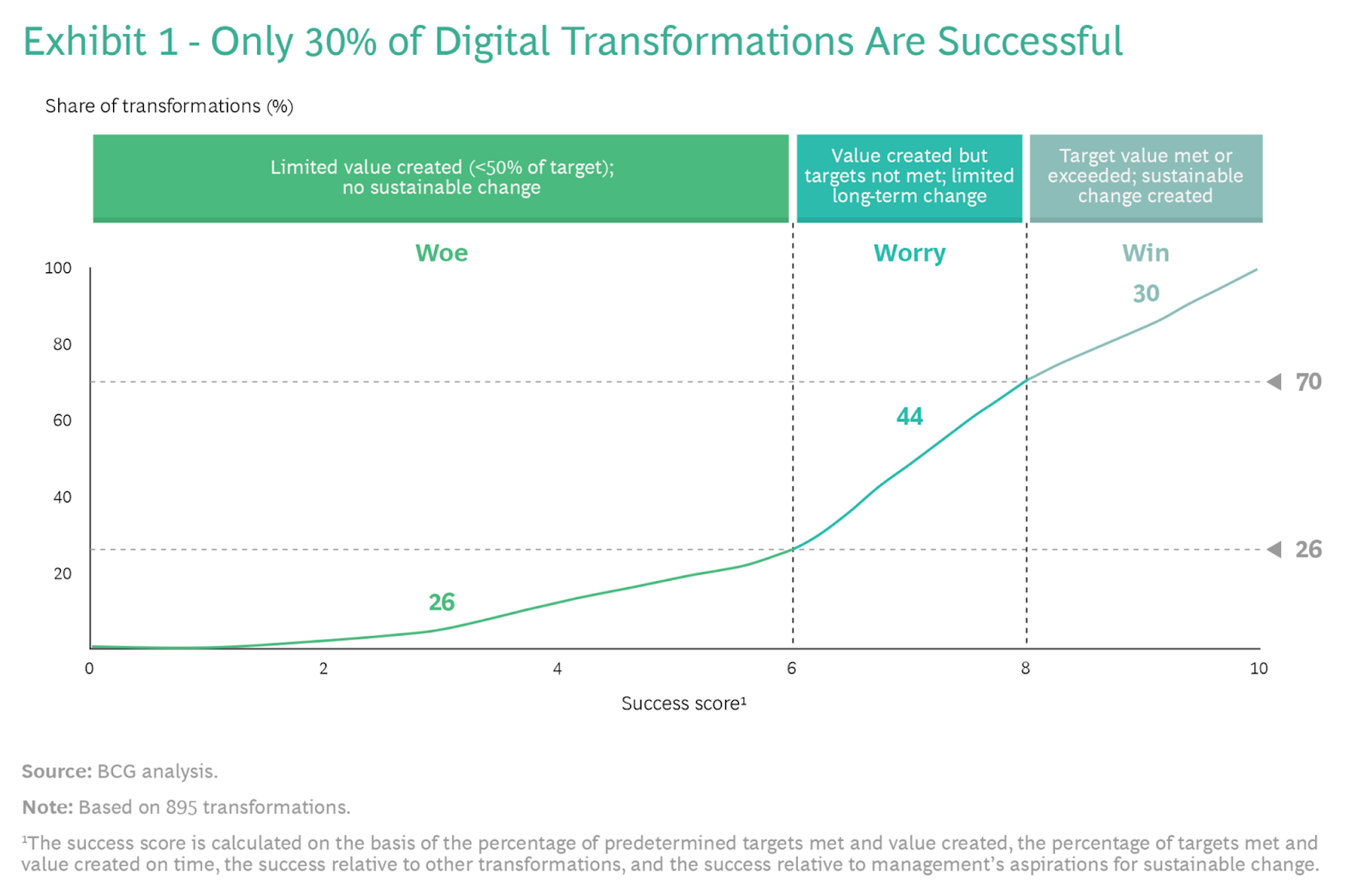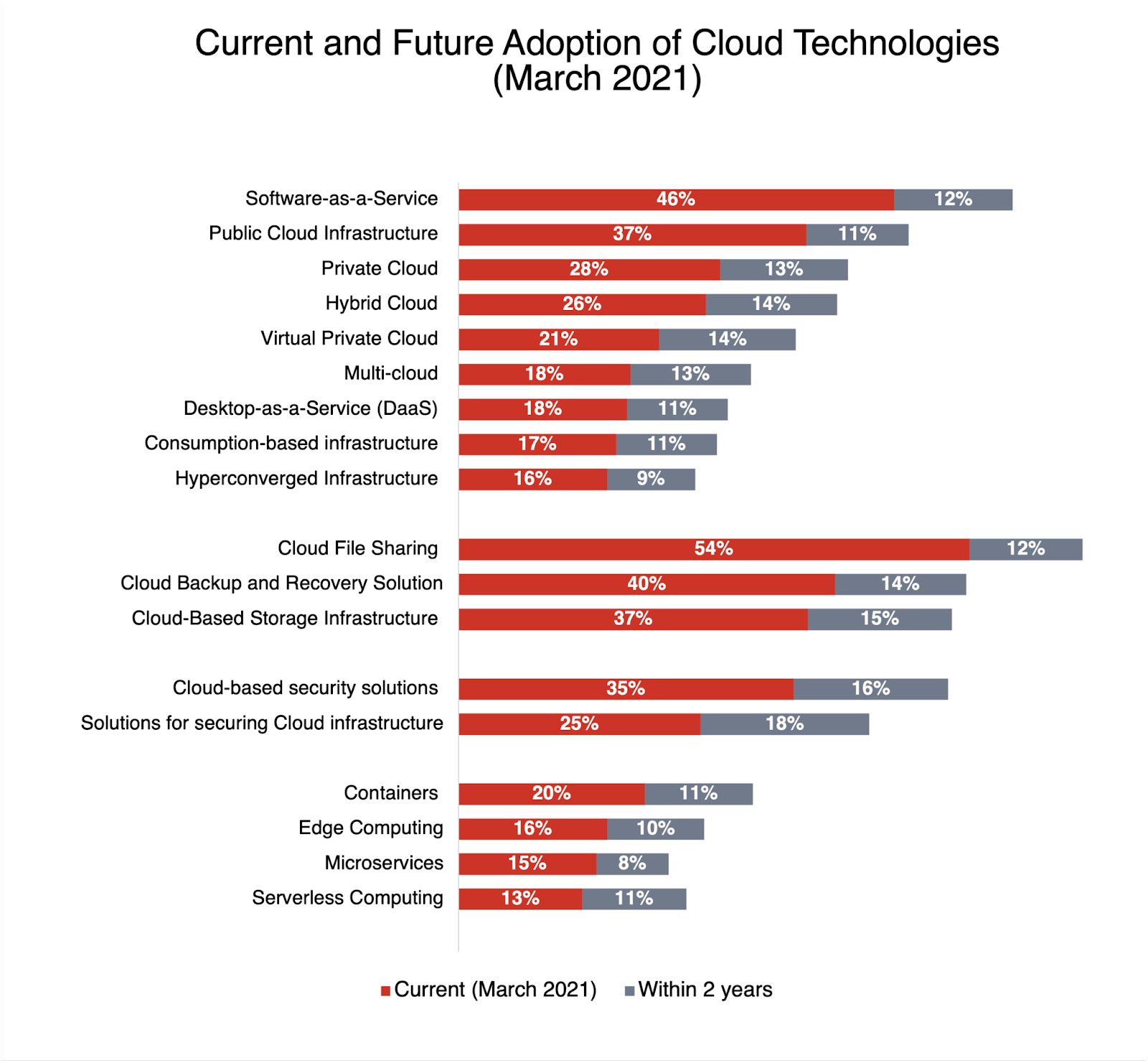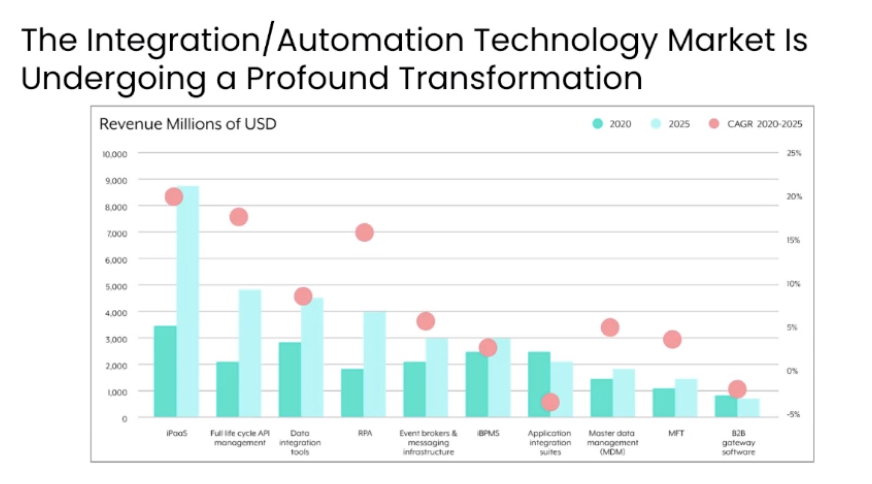Automation drives low-code digital transformation


Adam White
Content Marketing Associate @ Tray.io
Learn how the surge in demand for integration and automation promotes a low-code digital transformation strategy.
By 2023, half of all workflows will be on the cloud. To help scale their cloud processes, many organizations will turn to low-code tools for their digital transformation projects - specifically connecting cloud apps via API integration. To integrate apps at scale, companies are finding that low-code integration platforms deliver fast integration without leaning into their engineering resources. In fact, research shows that the number of executives who cite low code as a top investment has more than doubled since the pandemic. Here’s why:
Low-code platforms can help revamp or kickstart an organization’s digitization efforts by democratizing IT processes such as integration and automation. By adopting a low-code platform as part of an overall digital transformation strategy, businesses can achieve a new level of connectivity across applications without sacrificing engineering resources.
But despite the widespread acceleration of digital transformation efforts, nearly 70% of these initiatives fall short of their objectives. While there are several factors at play, 51% of organizations currently undergoing a large-scale transformation cite a skills gap between IT and line-of-business (LOB) teams as a digital transformation obstacle. To meet these challenges, organizations must embrace low-code platforms to help bridge the gap between their overburdened IT and digitally evolving business teams.

70% of digital transformation initiatives fail to meet business targets. Image courtesy of BCG.
Whether boosting campaign performance by syncing disparate marketing data or speeding up database migration via bulk replication, a low-code approach to digital transformation bolsters digitization efforts by rallying not only IT, but all departments, to help integrate systems and automate workflows. Let’s look at how cloud adoption, changing tech budgets, and the use of integration platforms-as-a-service (iPaaS) prompt companies to implement a low-code digital transformation strategy.
50% of workflows on the cloud by 2023
When businesses talk about their digital transformation strategy, they typically refer to migrating from on-premise servers to a cloud provider, such as Amazon Web Services (AWS), Microsoft Azure, or Google Cloud. Cloud computing is a flexible and cost-effective way for companies to scale their apps and services without the burden of maintaining a physical infrastructure. As data needs grow more complex, many companies take a multi-cloud approach to digital transformation by leveraging different cloud technologies for different services. By 2023, half of all workflows will be on the cloud, with SaaS and cloud file sharing technologies driving cloud migration.

Software as a service and cloud file sharing are the most widely used cloud services. Image courtesy of SWZD.
The rate of cloud migration is up 10% from the previous year as many organizations shift to flexible work environments for their employees. With a growing remote workforce, companies have increased tech budgets and continue to adopt more SaaS platforms so that work remains accessible and shareable in any location.
Departments use 40+ cloud apps, growing at 10%+ per year
On average, a department’s tech stack comprises over 40 different cloud-based applications, and it’s growing by more than 10% each year. Tech budgets for line-of-business teams are growing by 6.9%, while IT-owned budgets are only growing at 3.3%. With increasing tech budgets, business teams can acquire more-specialized software to support specific workflows and job roles.
However, companies experience a tipping point as they purchase and implement more software solutions. In an effort to accelerate their digital transformation, many organizations inadvertently overload their business teams with tools. The growing number of apps per department results in disjointed workflows, data silos, and constant context switching between applications, leading to reduced productivity and burnout.
As a result, demand for app integration and workflow automation is growing higher. But for many IT teams, keeping up with this demand for custom integrations and code-intensive automation is expensive, time-consuming, and unscalable. To combat this, many companies invest in iPaaS to streamline their integration and automation initiatives.
iPaaS is growing 4x faster than the overall global software market
Virtually every SaaS app uses APIs—application programming interfaces that allow two systems to interact with each other. The standardization of APIs coupled with the rising number of SaaS tools has resulted in a booming iPaaS market that’s growing 4x faster than the overall software market, reaching nearly $9B by 2025.

The global iPaaS market is expected to reach nearly $9B by 2025. Image courtesy of MarTech.
iPaaS platforms provide a holistic way for organizations to introduce and connect applications, making it easier to move data between systems and automate key workflows. And for businesses trapped in a web of disparate SaaS tools, iPaaS arms teams with a way to cut through the tangles and build connections.
But as a still largely IT-owned process, requests for integration and automation can quickly become a burden for IT teams, taking time and resources away from other digital transformation projects. Low-code platforms can help curb additional IT projects by placing API integrations and workflow automation into the hands of line-of-business users.
How low-code automation bolsters digital transformation
Integration and automation should be a core focus of any digital transformation strategy. But with IT teams bogged down by project deadlines, cost constraints, and remote work challenges, experts posit that nearly half of all digital transformation projects get put on hold. Line-of-business teams may be waiting weeks or even months for a single integration.
To get back on track with their digitization efforts, IT can implement a low-code platform to help alleviate the burden of creating integrations for their LOB teams. Low-code platforms empower users to rapidly build integrations and automate workflows using a visual, drag-and-drop builder allowing business teams to quickly tackle long-standing integration challenges, reduce IT’s backlog, and focus on more important projects.
For companies that take a low-code approach to their digital transformation projects, there are several integration and automation initiatives that have an immediate impact on productivity and growth. Here are the top five areas where a low-code platform can help accelerate digitization projects.
Top 5 fastest growing integration and automation initiatives
Lead automation
For marketing teams, ensuring leads are accurately flowing through the lead lifecycle can be a serious challenge. At each step of the buyer’s journey, leads have specific needs that must be addressed to move them toward making a decision. With the average enterprise using 91 cloud tools in their MarTech stack, there are a lot of opportunities for leads to fall through the gaps.
Through low-code automation, marketers can build an automated lead lifecycle across multiple applications, teams, and funnel stages without relying on IT to stand up the integrations between marketing systems. With real-time lead funneling, organizations can close the gap between marketing and sales instantly and follow up with qualified leads—a serious competitive advantage in today’s digital sales environment.
Opportunity to order
Anyone in sales will tell you their productivity is at the mercy of their CRM. While popular tools like Salesforce offer robust functionality, they tend to lack out-of-the-box integrations and automations, leaving sales pros to labor over repetitive, manual tasks such as re-entering orders and creating quotes.
Sales teams that leverage a low-code automation platform can instantly synchronize opportunity data, order details, and pricing to expedite their opportunity-to-order workflow. With a quicker revenue cycle, sales teams can close more deals, maximize upsell opportunities, and better prepare their customer success teams for handoffs.
Employee lifecycle management
Companies are digitally transforming their HR processes to meet the challenges of an evolving workforce. For many organizations, the shift towards remote work on top of the Great Resignation has highlighted inefficiencies in their hiring, onboarding, and retention processes.
HR teams can leverage low-code automation to connect and flow employee data from recruitment to payroll, benefits, and other HR apps. To better scale the onboarding process, automated provisioning ensures employees can securely access the right tools without manual data lookups or rekeying, and HR can be auto-triggered when employees officially join.
Customer experience automation
From kickoff to renewal, customer success teams are under a lot of pressure to retain and grow their existing accounts. Without a seamless handoff from sales or an efficient support ticketing workflow, companies risk unhappy customers and increased churn.
With low-code automation, sales and customer success teams can sync customer data to provide valuable context for onboarding. Furthermore, support teams can automatically segment accounts to deliver a more personalized customer experience.
Integration for analytics
Analytics teams leverage business intelligence platforms to visualize and analyze key metrics in order to identify gaps and gain valuable insights. However, disparate data sources require intensive and time-consuming ELT (extract, load, transform) processes to prep the data for analysis.
Data teams can adopt a low-code automation platform to unify data across multiple platforms and easily sync data for real-time dashboards and reports. By eliminating complex data transformation processes, data teams can uncover actionable insights by delivering a holistic, 360-degree view of the business.
Low-code digital transformation: a megatrend for growing businesses
Modern businesses are taking advantage of important tech trends and processes such as low-code integration and automation to improve and streamline their digital transformation initiatives. Learn more about the five megatrends in integration and automation in the full infographic and webinar.